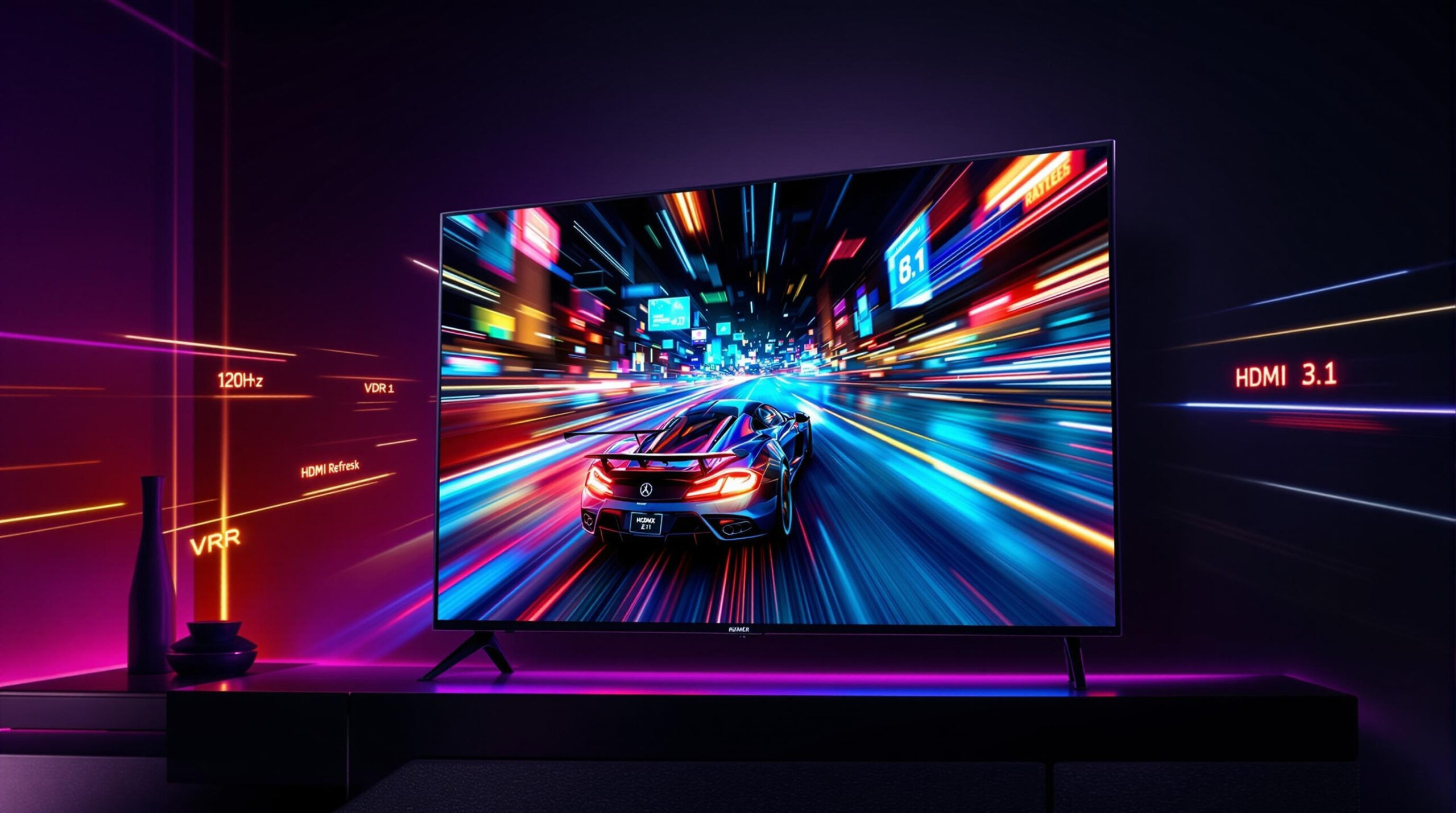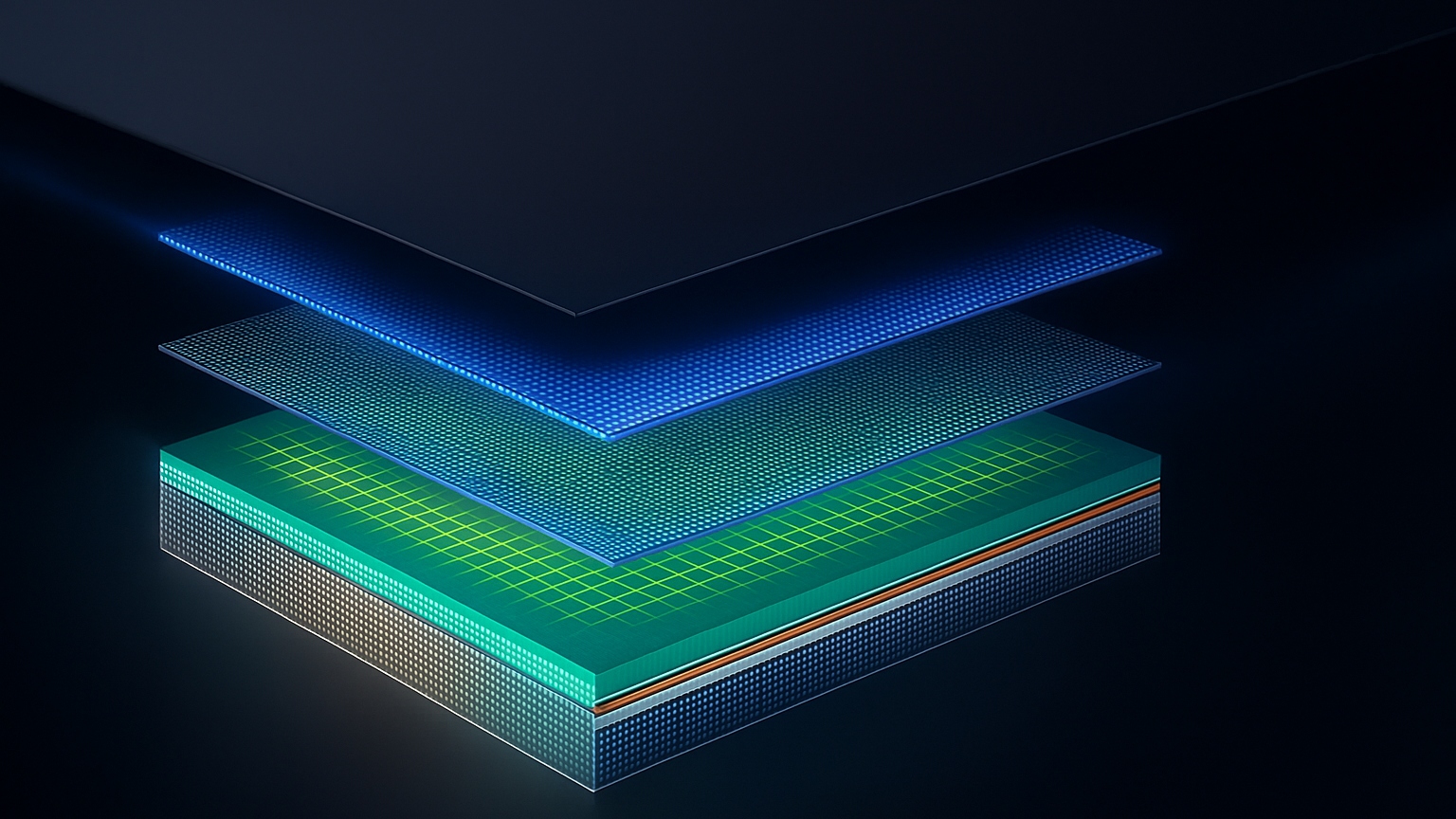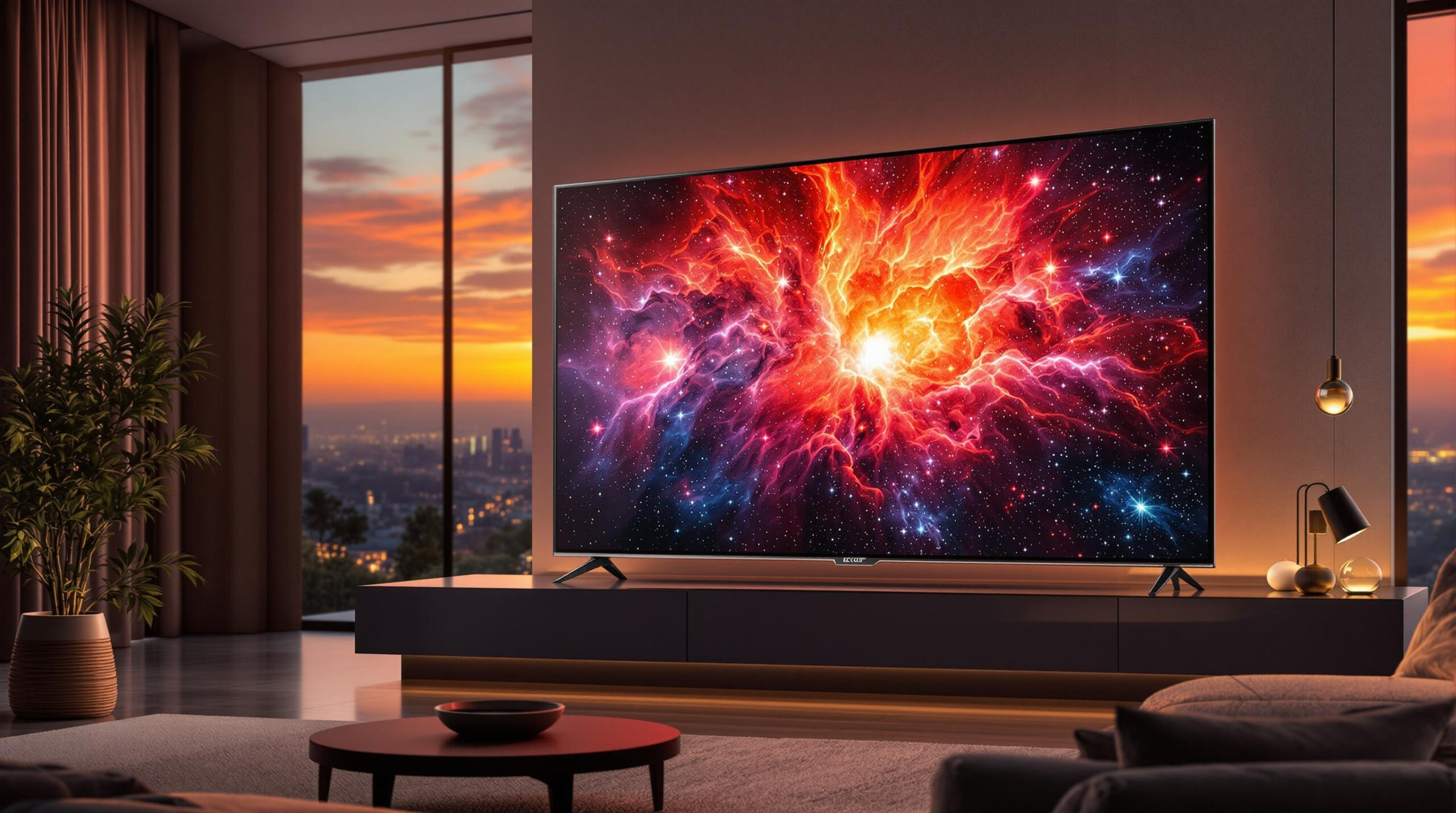Few topics ignite more spirited debate in home-theater circles than whether local dimming is truly necessary on a QLED TV. At first glance the question feels simple—after all, modern quantum-dot sets already advertise billion-color palettes and retina-searing brightness. Yet beneath that glossy marketing lies an intricate web of physics, chemistry, and electronic engineering that dictates how faithfully a TV can paint the deepest blacks beside dazzling highlights. To understand why local dimming can make—or occasionally break—the QLED promise, we need to start at the quantum dot itself and follow the photons all the way to your eyes.
Quantum Dots 101: Where Color Begins
Every QLED panel starts with a blue LED backlight. Sitting just millimeters above it is a film peppered with nanocrystals—quantum dots—whose diameters hover near five nanometers. Because quantum dots are quantum-confined (their electrons are locked in all three spatial dimensions) the energy gap between the valence and conduction bands depends on particle size. Smaller dots emit shorter-wavelength green light; slightly larger dots emit longer-wavelength red. When a blue photon excites a dot, it relaxes and re-emits a photon whose color is tuned with atomic accuracy.
The resulting red-green-blue blend yields wide-gamut coverage—typically over 90 % of Rec. 2020—without the heavy rare-earth phosphors used in older LEDs. Chemically these dots are often indium phosphide or cadmium-free zinc-selenide cores wrapped in a ZnS shell for stability, then encapsulated in a polymer matrix that blocks oxygen and water vapor. Spectral purity is stunning, but note the dots cannot dim themselves; they simply convert light supplied by the backlight. That limitation is the root of the local-dimming story.
The Liquid-Crystal Gatekeeper
Above the quantum-dot sheet sits the liquid-crystal (LC) array and its thin-film-transistor (TFT) matrix. Each sub-pixel functions like an adjustable Venetian blind, twisting LC molecules via an electric field to throttle how much backlight passes through. Even in the “fully closed” state, leakage remains—typically 0.1 % to 1 % of incident light—because the crystals never achieve perfect extinction and tiny gaps in the black matrix allow stray photons to bypass the shutters. Without additional light control, letter-box bars and starry skies appear washed-out gray.
From CCFL to Mini-LED: The Backlight Evolves
Early LCDs relied on cold-cathode fluorescent lamps (CCFLs) that spanned the entire panel, delivering uniform but indiscriminate luminance. When white LEDs replaced CCFLs, manufacturers gained the freedom to cluster emitters and pulse them independently. Edge-lit designs place LED strips along the panel’s perimeter and guide light inward through prisms and diffusers; pseudo-local dimming adjusts brightness only in coarse vertical bands. Full-array local dimming (FALD) scatters hundreds of LEDs behind the screen, dividing them into zones that can brighten or darken on command.
Enter mini-LED: by shrinking chip sizes below 0.2 mm, engineers pack thousands of emitters across the same surface area. A 75-inch flagship now boasts upward of 1 500 zones, each driven by constant-current ICs that modulate amplitude at kilohertz speeds. More zones mean finer granularity, lowering the odds that a bright pixel spills light into neighboring shadows.
Local Dimming Explained: Zonal Photonics in Action
Local dimming’s mission is deceptively simple: reduce backlight intensity everywhere except where high luminance is required. Each zone’s driver monitors the incoming video signal—often pre-processed to Y′CbCr to isolate luma—and computes an optimal current set-point. Sophisticated algorithms factor in human contrast sensitivity, panel gamma, and temporal averaging to avoid pumping artifacts. When an explosion lights up the left side of the screen, only those LEDs ignite to full power while right-hand zones sink toward black.
Physically, the LC layer still leaks, but with far fewer photons incident on it, apparent black depth plunges from roughly 0.05 cd/m² to below 0.005 cd/m²—an order-of-magnitude improvement that pushes dynamic contrast ratios above 500 000 : 1 on ANSI checkerboard tests. Importantly, local dimming also reclaims headroom: because overall frame brightness drops, the TV’s power budget can be diverted to highlight zones, letting them spike over 2 000 nits without cooking the entire backlight.
The Science of Blooming and Halo Artifacts
Why doesn’t adding more zones eliminate halos outright? Because light obeys Lambertian diffusion inside the panel’s optical stack. Each LED couples into a light-guide plate that intentionally spreads photons to erase hot-spots; micro-lenses, scattering dots, and diffusion films bounce rays sideways before they ever meet the LC shutters. Consequently, when a single zone brightens, its photons wander laterally and emerge across multiple pixel columns. Engineers counter this with compensation algorithms that pre-dim surrounding zones and rely on the eye’s temporal integration to mask edges, but a perfect fix remains elusive until per-pixel backlights—micro-LEDs—arrive at mass-market scale.
HDR Synergy: Luminance, Contrast, and Color Volume
High Dynamic Range demands simultaneous reproduction of 0.0005 cd/m² star fields and 10 000 cd/m² sun flares defined in the SMPTE ST-2084 PQ curve. The LC shutter’s finite contrast means without local dimming, QLED panels clip highlights or raise blacks to meet average picture-level constraints. Mini-LED local dimming solves the physics by adding spatial control: dark zones settle at micro-candela levels, preserving black detail, while bright zones surge, mapping PQ’s high-end faithfully. Quantum dots further help by maintaining saturated chroma even at extreme luminance, ensuring the color-volume “cube” remains full—something OLED struggles with above 800 nits due to blue-OLED aging and thermal quenching.
Electrical Engineering Under the Hood
Driving thousands of LEDs independently is a non-trivial power-electronics feat. Each zone employs a DC-DC buck converter feeding constant-current sinks; pulse-width modulation at ~27 kHz dims LEDs while staying outside audible and most visible flicker ranges. Thermal sensors distributed on the PCB throttle current to prevent hot-spots—junction temperatures above 125 °C accelerate phosphor degradation and shift color coordinates. To synchronize with the LC matrix (whose response lags by 4-10 ms depending on temperature), timing controllers insert a few milliseconds of “backlight delay” so shutters reach target orientation before the LEDs flash, minimizing image smear.
Energy, Heat, and Reliability Trade-Offs
Paradoxically, local dimming can both save and spend energy. Dark scenes run cooler, cutting wattage by up to 30 %, yet HDR peaks push instantaneous power above regulatory limits if unmanaged. TVs therefore modulate frame-average luminance (APL) with rolling windows—similar to smartphone brightness capping—to remain below 1 W per square inch continuously. Long-term reliability hinges on distributing thermal stress: staggered edge blending and random dithering patterns keep any single LED from operating at max current for extended periods, preventing early lumen depreciation.
Latency, Gaming, and the Human Visual System
Gamers fear that heavy backlight processing may introduce input lag or inconsistent shadow detail in fast titles. Modern QLEDs address this with local-dimming bypass modes that freeze zone output at baseline in low-latency “Game Mode,” sacrificing some contrast for <10 ms total lag. AI-assisted dimming in 2025 sets even predicts frame brightness ahead of time using motion-vector data, letting zones pre-charge and maintain accuracy without added delay. Perception research shows the human eye is less sensitive to halo artifacts during rapid motion, meaning local dimming’s worst offenses are often invisible at 120 fps gameplay.
Measuring Success: From Laboratory to Living Room
Engineers quantify local-dimming performance using ANSI checkerboards, 4 % windows, and specialist test patterns like star-fields and scrolling subtitles. Key metrics include static contrast ratio, dynamic contrast, black-level retention, and luminance overshoot. Review sites supplement with HDR real-scene measurements—think campfires, city skylines, and night football—where illumination complexity pushes algorithms hardest. In customer living rooms, subjective gain is linked strongly to environment: in a dark theater-style setup the improvement leaps off the screen; in bright daylight, ambient reflections swallow the deeper blacks, and the advantage shrinks.
Is Local Dimming Strictly “Necessary”?
If your content is mainly SDR cable news in a sun-lit kitchen, the answer is “not strictly. ” But for anyone chasing reference-grade HDR movies, cinematic gaming, or nighttime binge sessions, local dimming remains indispensable technology on current QLED architectures. Without it, light leakage through the LC layer imposes a ceiling on contrast that no quantum dot or color filter can fix. Until micro-LED or other self-emissive solutions mature and hit mainstream price points, zonal backlights are the only practical route to pseudo-pixel-level control.
Future Directions: Toward Per-Pixel Perfection
Samsung Display’s QD-OLED marries quantum dots with organic emitters, sidestepping backlights altogether; LG’s MLA OLED boosts brightness via micro lenses. Meanwhile, TCL and AUO are piloting AM-mini-LED with tens of thousands of addressable emitters, shrinking zone size to coin diameter. Research labs are experimenting with electro-hydrodynamic liquid pumping to relocate diffuser nanoparticles on the fly, dynamically sharpening backlight beams—think “liquid lenses” for TVs. In parallel, next-gen quantum-dot color filters (QDCF) aim to relocate the dots from the film to the sub-pixel itself, boosting efficiency so fewer photons are wasted and dimming can be even more granular.
Conclusion: Engineering Elegance Hidden in Plain Sight
Local dimming may look like a checkbox on a spec sheet, yet it embodies a symphony of quantum mechanics, solid-state physics, perceptual psychology, and power-electronics wizardry. It compensates for the LCD’s inherent light leakage, leverages quantum-dot purity, and bends thousands of miniature LEDs to its will—all so your eyes perceive true darkness beside supernova brilliance. So, is local dimming necessary on QLED TVs? If you value accurate HDR, immersive contrast, and scientific color volume, absolutely yes. It is the critical bridge between today’s backlit quantum-dot panels and tomorrow’s fully emissive displays, ensuring that every photon—whether born in a supernova or a cinematic flare—reaches your living room with the drama the director intended.
QLED TV Reviews
Explore Philo Street’s Top 10 Best QLED TV Reviews! Dive into our comprehensive analysis of the leading QLED TV products, complete with a side-by-side comparison chart to help you choose the perfect protection for your devices.




